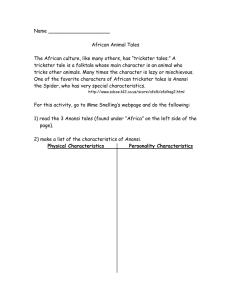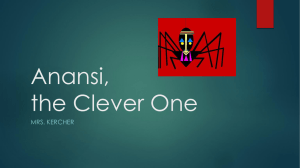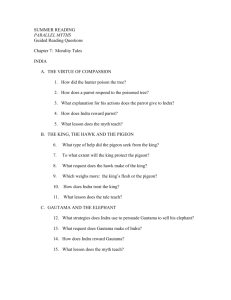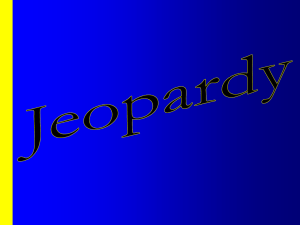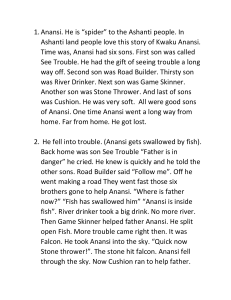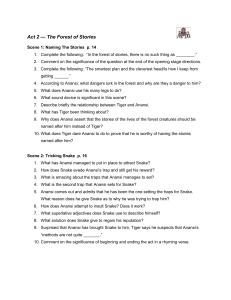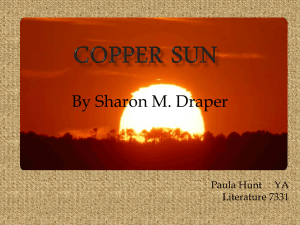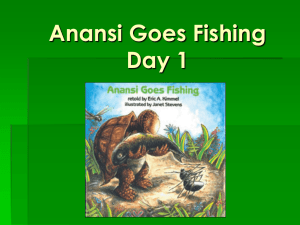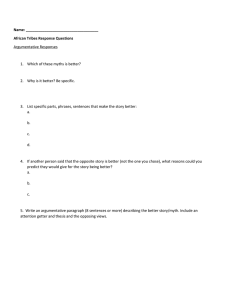Resource
advertisement
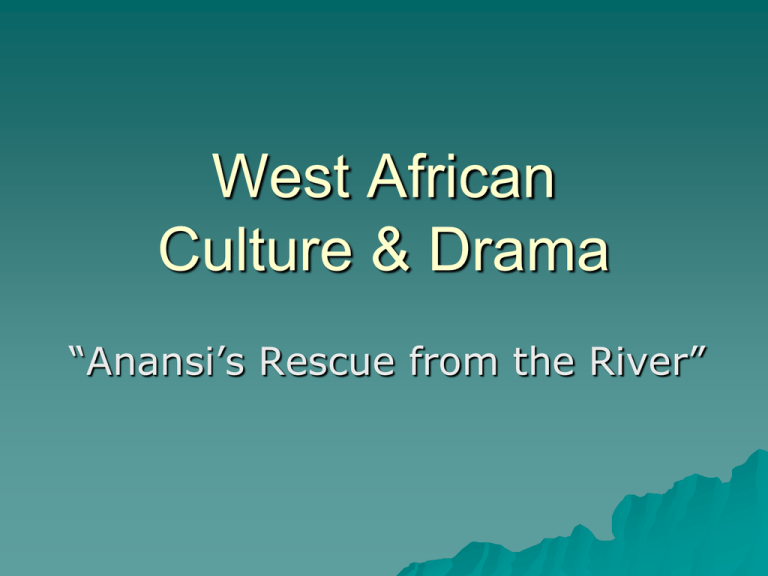
West African Culture & Drama “Anansi’s Rescue from the River” Location http://en.wikipedia.org/wiki/West_Africa http://en.wikipedia.org/wiki/Ghana Climate & Geography Africa has vast climates Undergoing climate changes West Africa – Part Rainforest, part Sahel Extremely wet and humid Mostly brown except during Rainy season – High temperatures – Mainly flat land http://bptravel.tripod.com/yafrica.htm http://www.pbs.org/wnet/africa/explore/rainforest/rainforest_overview_lo.html Storytelling Characteristics For entertainment and education Passes on cultural stories Emphasizes and supports the values of a people Says who you are and what is special about you Cultivates an attitude of thinking Expresses humanity Arts Toolkit - Drama West African Storytelling Forms Oral tradition prevalent in African communities Storyteller invites the audience to gather around and hear the story – Set beginning and ending – Audience is stationary (stays) Informal gatherings of friends and family – “Big ol’ lie” and tells to entertain – People come and go West African Storytelling “Trickster” tales – One character outsmarts another – Most Anansi the Spider tales are this type “Why” stories or Myths – Set in nature – Supernatural beings and heroes – How something came to be “Why do mosquitoes buzz in people’s ears?” “The Buzzard and the Monkey” African American Storytelling Forms Stylized verbal art – Found on street corners – Rap poems – Contemporary slang West African Storytelling Jali or Griots (Storyteller -Musicians) – Still tell stories today because they are responsible for teaching the stories to their people and making sure that they understand them – Tales about relationships within family, doing good without being told, getting along, responsibility – “Life of service” – helping others Kwaku means Uncle (Village Elder) – Name of male child born on Wednesday – Important in Ashanti culture as the Uncle is responsible for nieces & nephews Nana Yaa Asantewaa Gloria Bivens Louisville, KY native Graduated from University of Louisville Received many awards & achievements Traveled west African countries to study oral traditions & culture http://www.ket.org/cgi-bin/fw_louisvillelife.exe/db/ket/dmps/ Programs?do=topic&topicid=LOUL010045&id=LOUL Mama Yaa’s Performance Carries cow tail switch (African tradition for storytellers) Headress and clothing Importance of singing, drumming, and dancing to communicate messages and retell stories Plays balaphone – Ashanti people today are great artisans Anansi the Spider Folktales Father was the sky god – Ashanti, Nyames Most Anansi tales are trickster tales Our tale is a traditional West African Folktale/Myth – Myths explain how something came to be – Shows Anansi’s wisdom in “Anansi’s Rescue from the River” Post Viewing Activities List and describe how these elements of drama were used in the performance – Literary – Technical – Performance Post Viewing Activities What purpose(s) of drama did this performance meet? – Sharing the human experience – Passing on tradition and culture – Recreational – Artistic expression Prose vs. Drama Compare and contrast this performance, storyline and format to these books – “Anansi” by Gerald McDermott – “A Story, A Story” by Gail E. Haley More Info Explore Africa with Anansi – http://www.pbs.org/wonders/Kids/kids.htm Why Anansi has Eight Thin Legs – http://www.africa.mrdonn.org/anansi.html Anansi the Spider by Gerald McDermott (Caldecott Winner) – http://www.geraldmcdermott.com/index.htm
